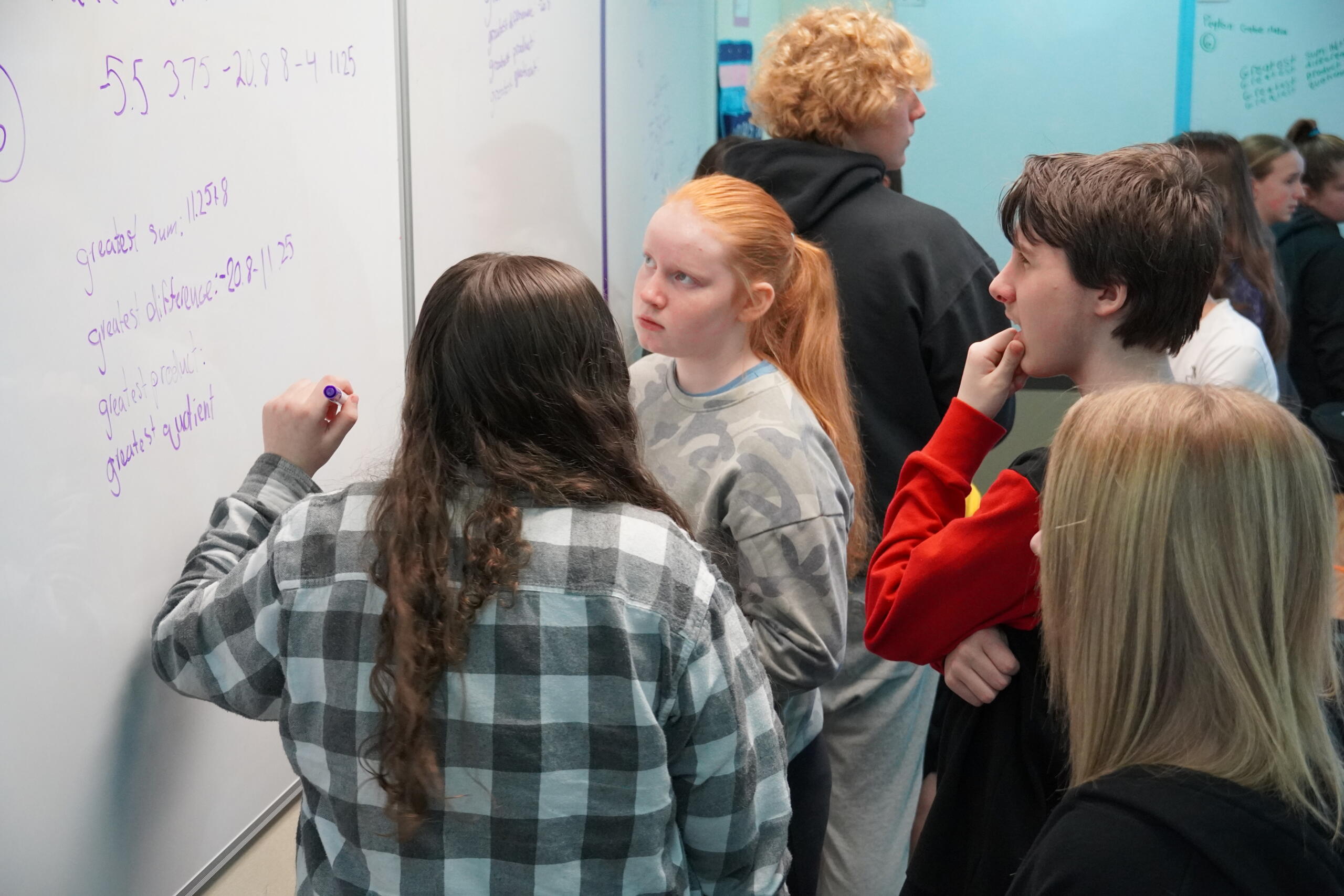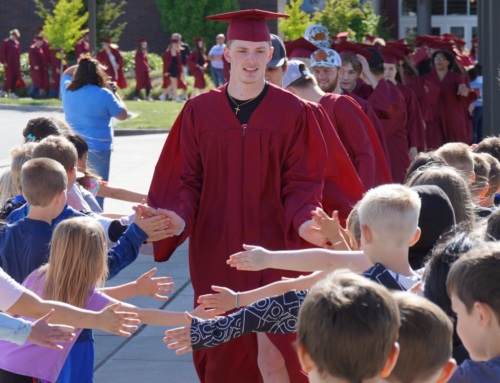Thinking happens mostly in our heads, invisible to others and even to ourselves. However, in math classrooms at Chehalis Middle School, students make their thinking visible – to everyone.
CMS math teachers are bringing out some of the best in student thinking using a new way of teaching math. The research-based strategies are called “Building Thinking Classrooms” and they look very different from what most adults remember when they were in school.
“I don’t want to see students sitting in rows doing math worksheets,” says Denise Obtinario. “I want to see students engaged and interacting with each other – showing their thinking, and talking about it.”
That they do.
At CMS, students do their math work standing up, in groups. The walls are lined with white boards and the students are busy talking – about their thinking.
“Sometimes it’s hard to get middle school students to share their thinking,” says
CMS Principal Chris Simpson. “However, our math teachers, in their Building Thinking Classrooms, have created the atmosphere that really promotes thinking, sharing and collaborating with others.”
When building thinking classrooms, teachers provide engaging tasks – sometimes non-curricular – for groups of students to consider and discuss. The goal is to create the kind of task which leads to longer and deeper learning – a practice that needs to be taught and practiced.
The grouping of students is also based on extensive research. With a clear understanding of individual roles, students participate in visibly random groupings. They do so with the mindset that they are not only going to think, but that they are going to contribute. Students interact with each other academically, and grow socially.
There is plenty of benefit coming from this random grouping practice. It appears that the random groupings help break down social barriers within the room, increase knowledge mobility, reduce stress, and increase enthusiasm for mathematics.
Many adults recall sitting at their desk during math class, quietly trying to recall the instruction. Research is showing that when students stand and work on vertical non-permanent surfaces such as whiteboards, blackboards, or windows the learning is optimal. Research results also indicate it does not matter what the surface is, as long as it is vertical and erasable (non-permanent). A non-permanent surface promotes more risk taking, and the vertical stance prevents students from disengaging.
Middle school math teachers are seeing results when using these instructional strategies together. Having students work in their random groups on a non-permanent surface is having an impressive impact on transforming previously passive learning spaces into active thinking spaces where students think, and keep thinking.
Watch Mrs. Obtinario’s math classroom in action
Chehalis teachers have been exploring better ways to engage students in learning math for years. “Our teachers have been seeking ways to improve math instruction for as long as I can remember,” says Assistant Superintendent Trisha Smith. “We began taking teams of math teachers to Stanford University in 2018 to learn about Mathematical Mindset from Dr. Jo Boaler.”
Boaler was recently ranked number one in curriculum and instruction among university-based scholars in the United States who did the most last year to shape educational practice and policy. She promotes a mindset that we are all on a growth journey when it comes to math. “We need to replace the idea that learning ability is fixed with the recognition that we are all on a growth journey,” says Boaler.
This growth mindset plays an important role in the development of a plan for improving mathematics achievement for all Chehalis students. Director of Student Achievement Rick Goble shares, “Students who have a growth mindset are most ready to learn. Perseverance is critical to success in math and life.” Goble is pleased with the progress middle school students are making right now, and credits math teachers, and instructional strategies used in their Building Thinking Classrooms for the positive experiences students are having.
Learn more about the Chehalis School District approach to teaching mathematics on a new webpage you can find on the district website at CSD Focus On Math.






